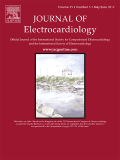
Journal of Electrocardiology
Scope & Guideline
Empowering Cardiovascular Research and Practice
Introduction
Aims and Scopes
- Electrocardiographic Analysis and Interpretation:
The journal emphasizes the importance of accurate ECG interpretation, exploring diverse patterns, abnormalities, and their clinical implications. It aims to refine existing methodologies and develop new diagnostic criteria for improved patient outcomes. - Innovative Technological Integration:
Research on the application of artificial intelligence (AI) and machine learning in ECG analysis is a significant focus. The journal publishes studies on AI-enhanced algorithms, automated interpretation, and the integration of wearable and mobile ECG devices. - Clinical Applications and Prognostic Indicators:
The journal highlights studies that link ECG findings with clinical outcomes, examining the prognostic significance of various ECG markers in conditions such as myocardial infarction, heart failure, and arrhythmias. - Multidisciplinary Approaches in Electrocardiology:
The journal encourages interdisciplinary research that combines insights from cardiology, electrophysiology, and technology, fostering a collaborative environment for tackling complex cardiac issues. - Educational Initiatives and Skill Development:
The journal promotes educational efforts aimed at improving ECG interpretation skills among healthcare professionals, ensuring that practitioners stay updated with the latest advancements and best practices.
Trending and Emerging
- Artificial Intelligence and Machine Learning Applications:
There is a marked increase in research exploring AI and machine learning for ECG interpretation, including automated detection of arrhythmias and predictive modeling for cardiac events. This trend signifies a paradigm shift towards utilizing computational techniques for enhanced diagnostic accuracy. - Wearable Technology and Remote Monitoring:
The rising interest in wearable ECG devices and remote monitoring solutions is evident, with numerous studies focusing on their effectiveness in managing cardiac conditions and improving patient outcomes. This trend reflects the growing demand for continuous health monitoring. - Personalized Medicine and Risk Stratification:
Emerging themes focus on personalized approaches to cardiovascular care, utilizing ECG parameters for risk assessment and tailored treatment strategies. This trend emphasizes the need for individualized patient management based on specific ECG findings. - Integration of Multimodal Data:
Research that combines ECG data with additional modalities, such as echocardiography or cardiac imaging, is on the rise. This integrative approach enhances the understanding of complex cardiac conditions and improves diagnostic capabilities. - Educational Frameworks and Training Programs:
There is a growing emphasis on developing structured educational frameworks and training programs for healthcare professionals to enhance their ECG interpretation skills, reflecting a commitment to improving clinical practice.
Declining or Waning
- Traditional ECG Interpretation Techniques:
There is a noticeable decrease in studies solely relying on conventional ECG interpretation methods without integrating technological advancements. The emphasis is shifting towards automated and AI-driven analysis rather than traditional manual interpretation. - General Cardiovascular Studies:
The journal has seen a decline in broader cardiovascular studies that do not specifically focus on electrocardiology. Research that lacks a direct connection to ECG findings or their applications in arrhythmia management is less frequently published. - Historical Case Reports:
While case reports still have value, there has been a reduction in the number of publications that focus on historical or singular case descriptions without broader implications or technological insights. - Basic Research in Cardiac Physiology:
Research that primarily explores basic cardiac physiology without a direct application to electrocardiology or ECG interpretation is becoming less prevalent, as the journal shifts towards applied and translational research. - Non-Invasive Monitoring Techniques:
Studies on non-invasive monitoring techniques that do not incorporate ECG analysis or interpretation are declining, as the focus moves towards integrating ECG with other diagnostic modalities.
Similar Journals
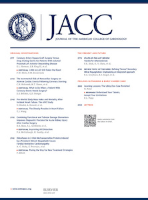
JOURNAL OF THE AMERICAN COLLEGE OF CARDIOLOGY
Empowering Clinicians with Cutting-Edge Cardiac ResearchJOURNAL OF THE AMERICAN COLLEGE OF CARDIOLOGY, the esteemed publication of Elsevier Science Inc, stands as a premier platform for advancing knowledge in the field of cardiology and cardiovascular medicine. With an impressive impact factor reflecting its prominence—ranked Q1 in its category for 2023 and occupying the 4th position out of 387 in the Scopus listings, firmly placing it in the 99th percentile—this journal is essential for researchers, clinicians, and students alike. Since its inception in 1983, it has continuously provided a vital space for high-quality research and innovative clinical practices, driving forward our understanding of cardiovascular health. While access options are not open, the value of the cutting-edge articles published here cannot be overstated, as they foster collaboration and inform better patient care across the globe. As part of its ongoing commitment to excellence, the journal solicits submissions of original research, reviews, and clinical studies that contribute meaningfully to the field and engage its diverse readership.
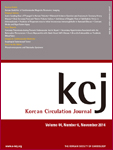
Korean Circulation Journal
Pioneering Insights in Cardiology and Cardiovascular Medicine.Korean Circulation Journal, published by the Korean Society of Cardiology, has established itself as a prominent platform for disseminating research in the fields of Cardiology and Cardiovascular Medicine. With an ISSN of 1738-5520 and an E-ISSN of 1738-5555, this journal has been at the forefront of cardiovascular science since its inception in 2006 and is projected to continue until 2024. The journal's commitment to quality is reflected in its 2023 category quartiles, ranking in the second quartile (Q2) for both Cardiology and Internal Medicine, as well as its commendable Scopus rankings within the respective fields. Located in South Korea, the journal aims to bridge the gap between cutting-edge research and practical applications, serving as an invaluable resource for researchers, healthcare professionals, and students keen on advancing their understanding of cardiovascular health. Although currently not an open-access journal, it provides a wealth of knowledge that encourages evidence-based practice in clinical settings.

Cardiovascular Digital Health Journal
Empowering Research in Cardiovascular Digital HealthCardiovascular Digital Health Journal is a premier publication dedicated to advancing the field of digital health technologies in cardiovascular care. Published by Elsevier, this journal is a vital resource for researchers, professionals, and students engaged in the exciting intersection of cardiovascular medicine and innovative digital solutions. With an ISSN of 2666-6936, the journal spans from 2020 to 2024 and is categorized in Q2 across prominent fields including Biomedical Engineering, Cardiology and Cardiovascular Medicine, and Critical Care and Intensive Care Medicine, reflecting its influential position in the academic community. Although currently not an open-access journal, it offers access through institutional subscriptions, enabling a broad reach for cutting-edge research. The Cardiovascular Digital Health Journal not only strives to disseminate high-quality studies but also aims to foster collaborative insights that propel the integration of digital health in cardiovascular practice, addressing the critical needs of health systems worldwide.

ANNALS OF NONINVASIVE ELECTROCARDIOLOGY
Unveiling the power of noninvasive methods in heart health.ANNALS OF NONINVASIVE ELECTROCARDIOLOGY is a peer-reviewed journal published by WILEY that has been pivotal in advancing the field of cardiology since its inception in 1996. With an ISSN of 1082-720X and an E-ISSN of 1542-474X, this journal offers open access to its research since 2020, reflecting a commitment to disseminating knowledge widely within the academic community. The journal operates from the United Kingdom, and its current category quartiles—Q3 in Cardiology and Cardiovascular Medicine, Medicine (miscellaneous), and Physiology (medical)—underscore its relevance to these dynamic fields. Although currently ranked in the 53rd percentile for Cardiology and Cardiovascular Medicine and 39th percentile in the Physiology category according to Scopus rankings, the ANNALS OF NONINVASIVE ELECTROCARDIOLOGY aspires to foster impactful research relating to noninvasive electrocardiology techniques, offering insights into cardiovascular health without the need for invasive procedures. This is particularly important as noninvasive methods continue to evolve and influence clinical practices. For researchers, professionals, and students alike, this journal serves as a vital resource for current studies, innovative methodologies, and breakthroughs in the understanding of cardiovascular functions.
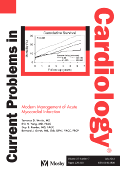
CURRENT PROBLEMS IN CARDIOLOGY
Addressing the Urgent Issues in Cardiology TodayCURRENT PROBLEMS IN CARDIOLOGY is a leading peer-reviewed journal published by MOSBY-ELSEVIER, dedicated to advancing the field of cardiology through comprehensive analyses of contemporary challenges faced by cardiovascular practitioners. With its ISSN 0146-2806 and E-ISSN 1535-6280, this esteemed journal has been a crucial resource for researchers, clinicians, and students alike since its inception in 1976, and continues to publish groundbreaking studies and reviews up until 2024. As a testament to its scholarly impact, CURRENT PROBLEMS IN CARDIOLOGY boasts a prestigious Q1 ranking in both Cardiology and Cardiovascular Medicine, as well as in the broader category of Medicine (miscellaneous) in the 2023 metrics, positioning it among the top journals in its field. With a Scopus ranking of #127 out of 387 in Cardiology, and a 67th percentile ranking, it remains a vital platform for disseminating high-quality research that addresses critical issues in cardiovascular health. Researchers and practitioners looking to stay at the forefront of cardiac medicine will find this journal an indispensable tool for informed decision-making and practice improvement.
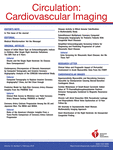
Circulation-Cardiovascular Imaging
Pioneering research that influences clinical practices and patient care.Circulation-Cardiovascular Imaging is a prestigious journal published by LIPPINCOTT WILLIAMS & WILKINS, dedicated to advancing the field of cardiovascular imaging through high-quality research and review articles. With an impact factor placing it in the Q1 category across key areas including Cardiology and Cardiovascular Medicine, Medicine (miscellaneous), and Radiology, Nuclear Medicine and Imaging, this journal fosters scholarly communication among leading experts and emerging researchers. Established in 2008, it has rapidly become an essential resource for academics and professionals, given its commitment to disseminating groundbreaking findings and methodologies that influence clinical practices and patient outcomes. Circulation-Cardiovascular Imaging is designed to engage a wide audience, from seasoned practitioners to students keen on exploring the nexus of cardiology and innovative imaging techniques. Its significant visibility in the medical literature underscores its role as a cornerstone in the evolution of cardiovascular diagnostics and patient care.
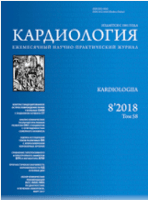
KARDIOLOGIYA
Cultivating a Legacy of Cardiac ResearchKARDIOLOGIYA is a renowned academic journal in the field of cardiology, published by the Russian Heart Failure Society. Since its inception in 1961, this journal has been dedicated to disseminating cutting-edge research in cardiovascular medicine, contributing to the global understanding of heart-related diseases and their management. With a significant publication history that spans over six decades, KARDIOLOGIYA provides a platform for both established researchers and emerging scholars to publish their findings. Despite its current Q4 category ranking in the 2023 Cardiology and Cardiovascular Medicine category, the journal plays a crucial role in promoting regional insights and advancements in cardiology, while striving towards higher visibility and impact within the academic community. While not an open-access journal, the journal is accessible to institutions and professionals in the Russian Federation and beyond, fostering collaboration and knowledge sharing among healthcare professionals. With a Scopus rank of #259 among 387 journals, it is well-positioned to enhance discourse in the field and support the development of innovative approaches to cardiovascular care.

Journal of Cardiology
Innovating solutions for a world of cardiovascular challenges.Journal of Cardiology, published by ELSEVIER, stands as a prominent resource in the field of cardiology and cardiovascular medicine. With a rich history since its inception in 1987, this peer-reviewed journal aims to disseminate cutting-edge research that enhances the understanding and treatment of cardiovascular diseases. Its 2023 ranking places it in the Q2 category within its discipline, reflecting its significance and impact, as evidenced by a Scopus rank of #123 out of 387 journals, positioning it in the 68th percentile of its field. The journal is headquartered in Japan, providing a unique perspective on cardiological advances relevant not only to the Asian continent but also globally. Though it does not currently offer open access, the Journal of Cardiology remains a vital institutional resource for researchers, clinicians, and students seeking to push the boundaries of cardiovascular science and improve patient outcomes.
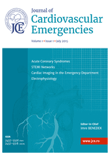
Journal of Cardiovascular Emergencies
Fostering global collaboration in the fight against cardiovascular emergencies.Journal of Cardiovascular Emergencies is a premier open-access journal dedicated to advancing the field of emergency cardiovascular care. Published by SCIENDO, the journal has been an essential resource for healthcare professionals since its inception in 2015, prioritizing the dissemination of cutting-edge research, case studies, and reviews that address acute cardiovascular conditions. With the ISSN 2457-5518 and E-ISSN 2457-550X, it stands as a valuable platform for researchers and practitioners alike, offering insights that can lead to improved patient outcomes in emergency settings. The journal, based in Warsaw, Poland, aims to foster collaboration and knowledge exchange within the growing community of cardiology and emergency medicine professionals. By making its content freely accessible, the Journal of Cardiovascular Emergencies underscores the importance of knowledge sharing in tackling the challenges presented by cardiovascular emergencies on a global scale.

Netherlands Heart Journal
Advancing Cardiovascular Knowledge for a Healthier TomorrowNetherlands Heart Journal is a premier academic publication dedicated to advancing knowledge in the field of cardiology and cardiovascular medicine. Published by BOHN STAFLEU VAN LOGHUM BV, this journal has established itself as a critical platform for researchers, professionals, and students seeking to explore groundbreaking findings and innovative practices in cardiovascular health. With an ISSN of 1568-5888 and E-ISSN 1876-6250, the journal boasts a respectable Q2 ranking in the Cardiology and Cardiovascular Medicine category, placing it in the top half of its field according to the 2023 quartiles. The Scopus ranking places it 130th out of 387 in the relevant category, indicating a commendable percentile rank of 66th, which attests to its influence and quality of published research. Spanning from 2005 to 2024, the journal endeavors to include a diverse array of topics, encompassing clinical practice, technological innovations, and public health considerations related to cardiovascular diseases. Researchers and practitioners are encouraged to engage with the journal's robust content, contributing to and benefiting from the collaborative effort to enhance cardiovascular health worldwide.